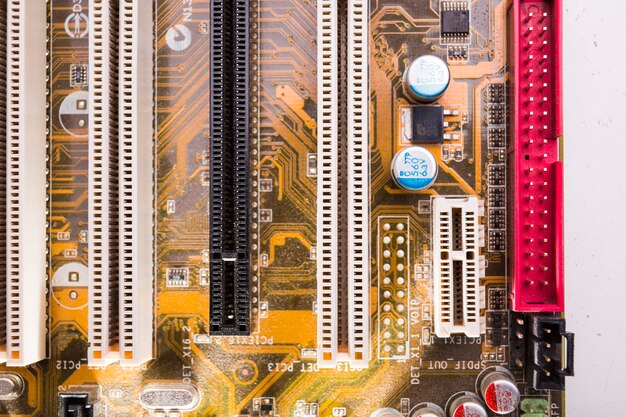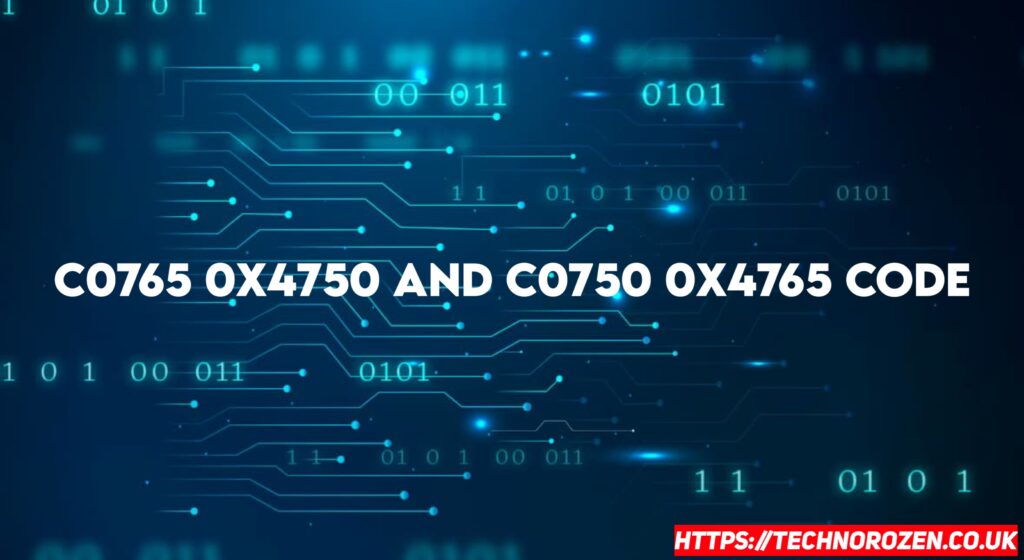Is your car acting up and showing the dreaded c0765 and c0750 codes? Don’t panic we’ve got you covered! Understanding these codes, knowing their common causes, and learning how to troubleshoot and fix them can save you time, money, and a lot of stress. So buckle up as we dive into this guide on resolving the c0765 and c0750 code issues in your vehicle!
Understanding the c0765 and c0750 Codes
When your car’s onboard diagnostic system detects a problem, it often communicates through specific codes. The c0765 and c0750 codes are no exception they indicate issues with the automatic transmission shift solenoid.
The c0765 code typically relates to a malfunction in the shift control solenoid valve E. On the other hand, the c0750 code points towards a problem with shift solenoid A malfunctioning.
Understanding these codes is crucial because they provide valuable insights into what’s going wrong in your vehicle’s transmission system. By decoding these alphanumeric combinations, you can pinpoint the exact component that needs attention.
While seeing these codes may trigger worry, arming yourself with knowledge about their meanings is the first step towards resolving any underlying issues effectively. So let’s roll up our sleeves and tackle this challenge head-on!
Also Read: https://tecwebpro.com/
Common Causes of These Codes
When it comes to the c0765 and c0750 codes appearing in your car’s diagnostic system, there are several common causes that could trigger these issues. One frequent culprit is a malfunctioning wheel speed sensor. These sensors are vital for the proper functioning of your vehicle’s ABS system, so any problems with them can lead to error codes being triggered.
Another possible cause of these codes is a damaged or faulty wiring harness connected to the wheel speed sensor. Over time, wear and tear can affect the integrity of the wires, leading to connectivity issues and ultimately triggering error codes on your dashboard.
In some cases, a problem with the electronic control module (ECM) could also be behind these trouble codes. The ECM plays a crucial role in monitoring various systems within your vehicle, including the ABS system. If it malfunctions or fails, it can result in error codes like c0765 and c0750 popping up during diagnostics.
Steps to Troubleshoot and Fix the Issue
When faced with the c0765 and c0750 codes in your car, it’s important to follow a systematic approach to troubleshoot and fix the issue. Start by checking the wiring harness and connectors for any signs of damage or corrosion. Ensure all connections are secure and free of debris.
Next, inspect the wheel speed sensors for any visible damage or wear. Clean them thoroughly to remove any dirt or grime that could be affecting their performance. If necessary, replace any faulty sensors following the manufacturer’s guidelines.
Resetting the trouble codes using an OBD-II scanner can sometimes resolve minor issues. However, if the problem persists after clearing the codes, further diagnostics may be required using specialized equipment.
Consulting your vehicle’s service manual can provide detailed instructions on troubleshooting specific components related to these codes. Following these steps diligently can help you identify and rectify the underlying issue effectively.
Tools and Supplies Needed for the Job
When it comes to tackling the c0765 and c0750 codes in your car, having the right tools and supplies on hand can make all the difference. Before getting started, ensure you have a code reader or scanner that is compatible with your vehicle’s make and model. This tool will help you pinpoint the exact issue triggering these codes.
Additionally, having a set of basic hand tools like wrenches, sockets, and screwdrivers will be necessary for accessing various components within your vehicle. A multimeter can also come in handy for testing electrical connections and voltage levels.
Don’t forget about safety gear such as gloves and eye protection to keep yourself safe while working under the hood. Having replacement parts ready if needed – such as sensors or wiring harnesses – can save you time in case any components need to be swapped out during troubleshooting.
Additional Tips for Success
When tackling the c0765 and c0750 codes in your car, there are some additional tips you can keep in mind to ensure a successful troubleshooting and fixing process. Always refer to your vehicle’s manual for specific guidance on these codes before proceeding with any repairs.
It’s also recommended to double-check all connections and wiring related to the ABS system as loose or damaged components can often trigger these error codes. Pay close attention to any signs of corrosion or wear that may be affecting the sensors or modules.
Furthermore, investing in a quality OBD-II scanner can greatly simplify the diagnostic process by providing real-time data readings and helping pinpoint the exact source of the issue. Don’t hesitate to reach out to online forums or automotive communities for advice from experienced DIYers who may have encountered similar problems before.
By following these additional tips, you’ll be better equipped to effectively troubleshoot and resolve the c0765 and c0750 codes in your vehicle.
When to Seek Professional Help
When it comes to dealing with the c0765 and c0750 codes in your car, knowing when to seek professional help is crucial. If you’ve gone through the troubleshooting steps and still can’t identify or fix the issue, it may be time to call in a professional mechanic.
Professional help should also be sought if you don’t have access to the necessary tools or supplies needed for the job. Attempting complex repairs without the right equipment can lead to further damage.
If you’re not comfortable working on your car’s electrical system or are unsure about diagnosing specific issues related to these codes, it’s best to leave it to the experts. A trained technician will have the expertise and experience needed to accurately diagnose and resolve any underlying problems causing these codes.
Remember, safety should always come first when working on your vehicle. If at any point you feel overwhelmed or uncertain about how to proceed, seeking professional assistance is always a smart decision.
Conclusion
As we wrap up our discussion on troubleshooting and fixing the c0765 and c0750 codes in your car, remember that patience and attention to detail are key when dealing with diagnostic issues.
By understanding the common causes of these codes and following the steps outlined for troubleshooting, you can effectively address any underlying issues in your vehicle’s system.
Equipping yourself with the necessary tools and supplies will make the job smoother, ensuring a successful resolution to the problem at hand. Additionally, implementing additional tips shared can further enhance your chances of resolving the issue independently.
Knowing when it’s time to seek professional help is important don’t hesitate to consult a mechanic if you feel unsure or overwhelmed by the complexity of the task. Remember, taking proactive steps towards maintenance and repair can prolong the life of your vehicle and keep it running smoothly on the road ahead.
FAQs
Can I drive my car with the c0765 and c0750 codes?
It is not recommended to continue driving your car with these codes as it can lead to further damage or safety issues. It’s best to address the problem as soon as possible.
How long does it take to fix the c0765 and c0750 codes?
The time it takes to troubleshoot and fix these codes can vary depending on the root cause of the issue. It could take anywhere from a few hours to a day, so be prepared for some downtime.
Are there any preventive measures I can take to avoid these codes in the future?
Regular maintenance checks, keeping up with fluid levels, and addressing any warning signs early on can help prevent issues that may trigger these codes.

 Uncategorized3 months ago
Uncategorized3 months ago
 Uncategorized7 months ago
Uncategorized7 months ago
 Uncategorized4 months ago
Uncategorized4 months ago
 Uncategorized4 months ago
Uncategorized4 months ago










